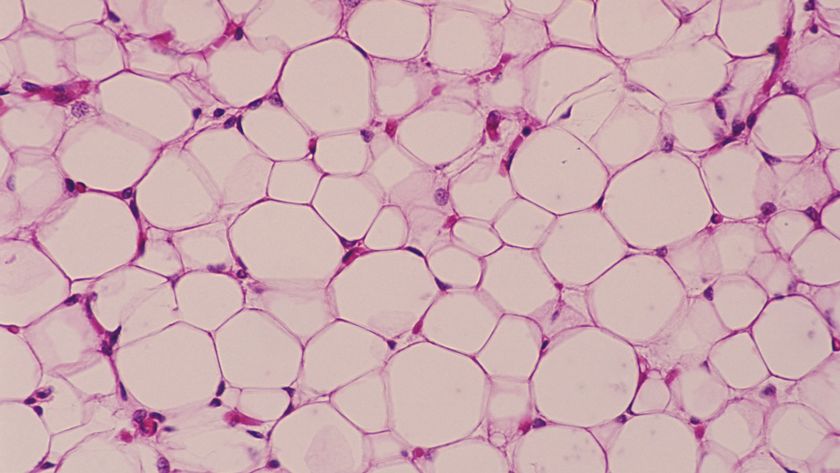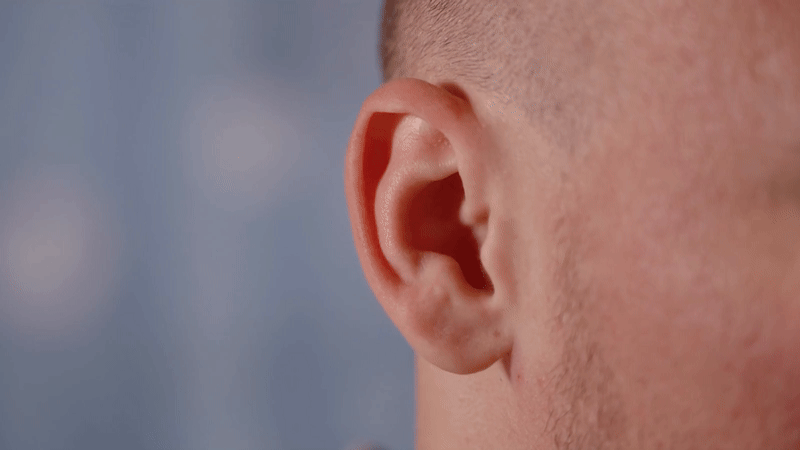Colon (Large Intestine): Facts, Function & Diseases

The body has two types of intestines. The small intestine is connected to the stomach and handles the middle part of the digestion process. The large intestine, also called the colon, is part of the final stages of digestion. It is a large tube that escorts waste from the body.
Size
The colon is much wider than the small intestine, but is also much shorter. According to the Cleveland Clinic, the small intestine is 22 feet (6.7 meters) long. The colon is only 6 feet (1.8 m) long.
This 6 feet of dense muscle is divided into four parts: the ascending colon, the transverse colon, the descending colon and the sigmoid colon. Each part represents a location in the broken rectangle shape that the colon makes in the body. The ascending colon is the right arm of the broken rectangle. The beginning of the ascending colon is called the cecum. The cecum is connected to the small intestine and the appendix.
The transverse colon is the top arm that spans from the left side to the right side like a bridge. The left arm is called the descending colon. The sigmoid is the “broken” part of the rectangle that creates an S-shape that hangs off of the descending colon. It empties into the rectum.
Function
The function of the large intestine is to get rid of food left over after the nutrients are removed from it, bacteria and other waste. This process is called peristalsis and can take around 36 hours, according to the Cleveland Clinic.
First, liquid and salt is removed from the waste as it passes through the colon. Then, the waste makes its way to the sigmoid, where it is stored. Once or twice per day, when the body is ready for a bowel movement, the waste is dumped into the rectum.
Diseases & conditions
There are many diseases and conditions that are associated with the colon. Colorectal cancer is cancer that occurs in the colon or in the lower colon near the rectum. It is one of the most common causes of cancer-associated death. The American Cancer Society estimates there will be 93,090 new cases of colon cancer in the United States in 2015 and one in 20 will get colorectal cancer in their lifetime.
Polyps are an abnormal growth of tissue on the inner lining of the colon or rectum that are benign, non-cancerous tumors, according to the American Cancer Society. These polyps can sometimes turn into cancer, but many times do not. There are several types of polyps. Adenomatous polyps can change into cancer and are considered pre-cancerous. Hyperplastic polyps and inflammatory polyps are not typically pre-cancerous, though some in the medical community think they may be signs of future colon cancer, according to the American Cancer Society. Doctors usually remove all polyps, just in case.
Colon dysplasia is when a spot of cells on the lining of the colon look abnormal under a microscope. These cells are not cancerous, but can change into cancer over time. People who have had diseases such as ulcerative colitis or Crohn's disease for many years can develop colon dysplasia.
Spastic colon, also called irritable bowel syndrome, is more than just a colon problem. It is the spontaneous contractions or loss of movement of the muscles in the small and large intestines, according to the Mayo Clinic.
Related: Diseases and conditions that affect the colon and the digestive system:
- Colon Cancer: Causes, Symptoms and Treatment
- Acid Reflux (GERD): Symptoms & Treatment
- Appendicitis: Signs & Symptoms
- Celiac Disease: Symptoms & Treatment
- Crohn's Disease: Symptoms, Diagnosis & Treatment
- Diarrhea: Causes, Symptoms & Treatments
- Gallstones: Causes, Treatment and Prevention
- Hemorrhoids: Symptoms, Causes and Treatment
- Inflammatory Bowel Disease: Symptoms & Treatment
- Irritable Bowel Syndrome: Symptoms, Treatment & Prevention
- Lactose Intolerance: Symptoms, Treatment & Coping Strategies
- Listeria Infection: Symptoms & Treatment
- Stomach Ulcers: Causes, Symptoms & Treatments
- Tapeworms: Causes, Symptoms & Treatment
- Ulcerative Colitis: Symptoms & Treatment
Promoting good colon health
There are many ways to improve large intestine health. Eat a healthy, balanced diet that is full of fruits and vegetables, consume fiber-rich diet, drink adequate amounts of water, exercise regularly and follow recommended guidelines for colon cancer screening and colonoscopies, Dr. Ajay Goel, director of epigenetics, cancer prevention and genomics at Baylor University Medical Center in Dallas, Texas, told Live Science.
Supplements, such as curcumin and omega-3, can help reduce chronic inflammation, said Goel. Other vitamins can be helpful, as well. “Low vitamin B6 levels have been associated with increased risk of certain cancers, such as colon and cognitive decline,” Dr. Sherry Ross, women’s health expert at Providence Saint John’s Health Center in Santa Monica, California, told Live Science.
A study shows that taking both curcumin and boswellic acids may help prevent colon cancer. “We have known for a while that curcumin and boswellia both have potent anti-cancer properties," said Goel, one of the study’s authors. "In this study, we investigated how they work in conjunction to reduce proliferation and increase cell cycle arrest and apoptosis (various mechanisms by which cancer cells are killed). We found that the two together activate a broader array of gene regulators called microRNAs, with a wider spectrum of impact compared to either compound individually.”
Colon cleanses
Many people use colon cleanses as a means to keep the colon healthy. This process includes taking laxatives, teas, powders or supplements, using enemas, or getting colonic irrigation (colon hydrotherapy) to flush out the colon. There can be side effects to cleansing, and some practices can even be dangerous. Doctors have varied opinions on cleansing. The colon’s very function is to remove toxins, so many doctors and medical groups, like the Mayo Clinic, believe that cleansing is unneeded and advise against it or to use caution. Others, like Goel, believe they can be helpful.
“Yes, colon cleanses can be very helpful in eliminating/washing away toxins from the body, but one must keep in mind that these cleanses (should be) as natural as possible and do not use strong/harsh chemicals, as these may provide temporary relief, but in the long run can negatively impact your colon health,” said Goel.
Related pages about the human body
Parts of the human body
- Bladder: Facts, Function & Disease
- Human Brain: Facts, Anatomy & Mapping Project
- Ears: Facts, Function & Disease
- Esophagus: Facts, Function & Diseases
- How the Human Eye Works
- Gallbladder: Function, Problems & Healthy Diet
- Human Heart: Anatomy, Function & Facts
- Kidneys: Facts, Function & Diseases
- Liver: Function, Failure & Disease
- Lungs: Facts, Function & Diseases
- Nose: Facts, Function & Diseases
- Pancreas: Function, Location & Diseases
- Small Intestine: Function, Length & Problems
- Spleen: Function, Location & Problems
- Stomach: Facts, Function & Diseases
- The Tongue: Facts, Function & Diseases
Systems of the human body
- Circulatory System: Facts, Function & Diseases
- Digestive System: Facts, Function & Diseases
- Endocrine System: Facts, Functions and Diseases
- Immune System: Diseases, Disorders & Function
- Lymphatic System: Facts, Functions & Diseases
- Muscular System: Facts, Functions & Diseases
- Nervous System: Facts, Function & Diseases
- Reproductive System: Facts, Functions and Diseases
- Respiratory System: Facts, Function & Diseases
- Skeletal System: Facts, Function & Diseases
- Skin: Facts, Diseases & Conditions
- Urinary System: Facts, Functions & Diseases
Additional resources
Sign up for the Live Science daily newsletter now
Get the world’s most fascinating discoveries delivered straight to your inbox.













